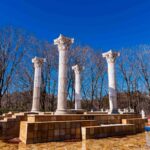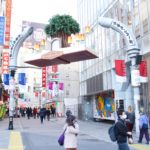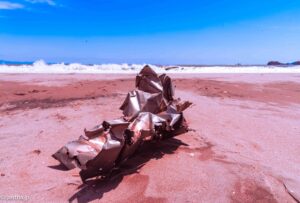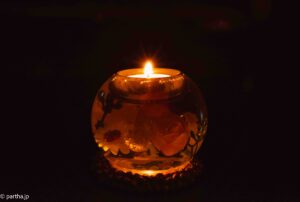
We came to Niigata prefecture in 2024, the comfortable drive, the mountains and the sea was something that stayed with us. There was something laid back yet curious and polite about the place. The gas station attendant who came over to help when she saw me struggling with the ‘Self’ pump, checking the air pressure ensuring I had the right amount for the highway and then wishing us a safe trip and asking us to come back to Niigata was my last memory of Niigata and something that stayed with me. We tried to go back later that year but a typhoon and personal commitments made us cancel two trips.
However we were back in early summer of 2025. The attraction was an Airbnb that was located inside a temple, the owner retained the temple and converted it into a unique stay experience.
But we needed a detour on our way to the temple and it was the Hoshitouge Terraced Rice Fields 星峠の棚田 Every website related to Niigata tourism features the pictures of these rice fields. The pictures are taken at dawn or dusk or during the rainy season when the rice fields are covered in water and reflect the sky, making for really striking pictures.
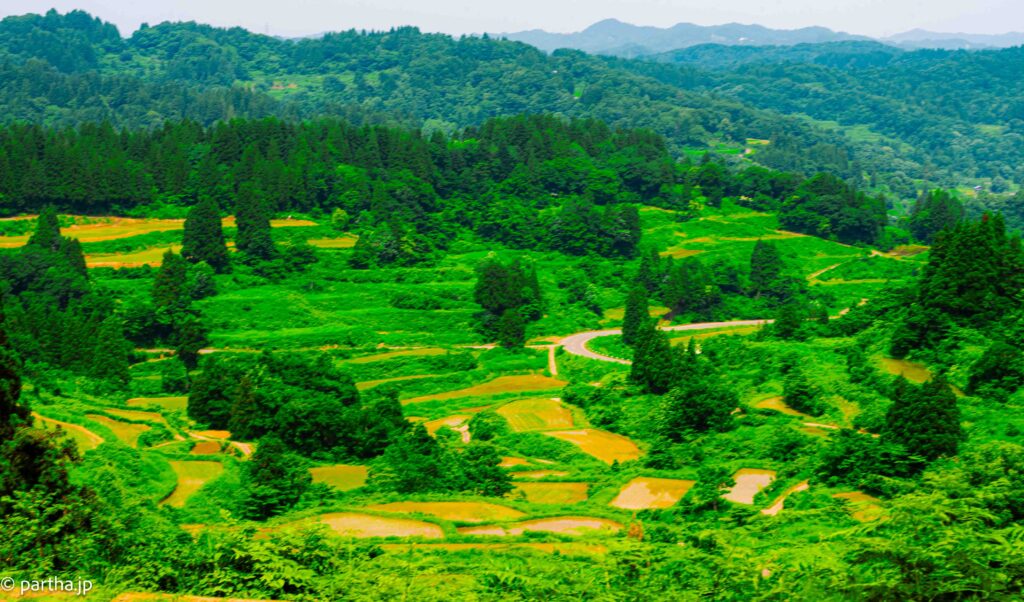
We went there in early June, one of the recommended seasons for taking good pictures.The fields are close to Tokachimachi, where we went last year taking a detour to Kiyotsu Gorge 清津峡 a combination of nature and man made attractions, exceptionally photogenic.
The rice fields did not register on the Car Navigation system and we used Google Maps to find our way. There are parts of the route that are clearly marked but there are others where we had to trust Google Maps to lead us to our destination.
We drove through narrow mountain roads, rural residential neighbourhoods before arriving at the destination. There are clearly marked parking areas for tourist buses, but there were no buses on this early summer afternoon. The car parking was a bit confusing and we found a spot near the toilets, partially shaded by trees on this warm afternoon.
There were a few cars parked randomly at different parts of the road, a handful of tourists, this time of the day probably wasn’t too popular with the crowds. Then there were the actual rice fields.
My expectations from the pictures was of a much larger area, more spread out fields, however the reality was that it looked much smaller than what I had hoped for. The fields are located on private lands so it is not possible to walk down to the fields, there are a few vantage points from viewing the fields located on the public road, a few spots for taking pictures. There is a cafe, next to the road, operated by a friendly couple who will chat with you even if you do not buy anything.
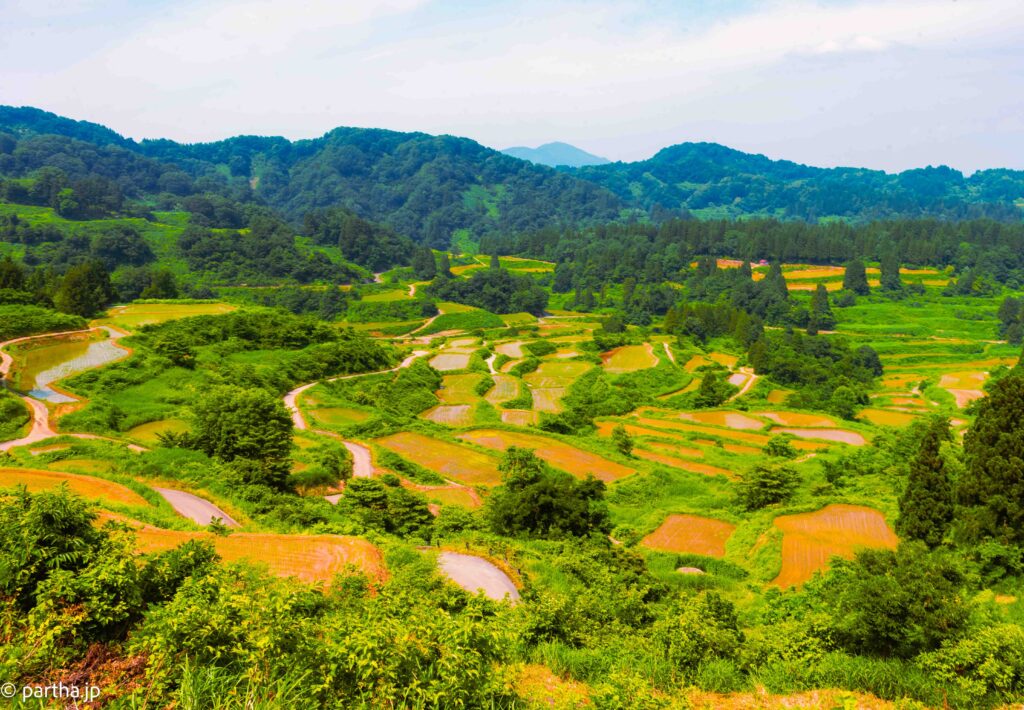
There is a camp site above a hill next to the access road. I could check the details online about the prices for renting the tree houses(JPY 44,000 onwards)
The gate to the campsite was closed and I could not see the signs of anyone around it. June is the recommended season so it was surprising at the lack of activity in the camp.
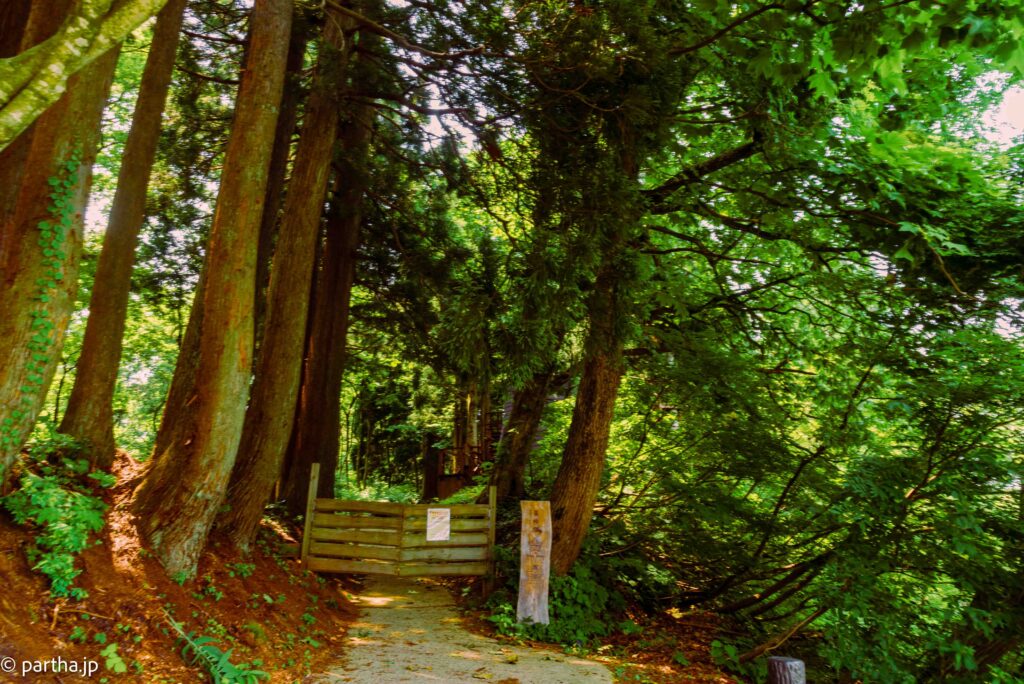
The rice fields viewing can be done within 30 minutes, the viewing points are limited and the area that is covered is relatively small. It might be a rewarding experience at dawn or dusk, I can imagine some great pictures in twilight. But an early summer mid-day is not a time for beauty.
We took our pictures, took a few for a group of girls from their phones and then made our way back to the next destination Minamiuonuma, the location of our Airbnb. Minamiuonuma was an hour’s drive from the rice fields. We drove along the fields and almost missed the narrow path that lead to our destination.
Our Airbnb advertised itself as a 250 year old temple, the only inn in Japan that used to be a temple.The temple was called Yuinenji and comes under the Jodosinsyu Ohtani faction. The temple lost the monk due to depopulation and was converted into a community hall but was rarely used. So the owner decided to convert it into a hostel.
The description goes on ‘The original founder of the temple was a monk called Yuinenbou and arrived here from the Nagano prefecture in the 15th century. He helped the local ruler(unclear how) and was given permission to stay and founded this temple’.
If the temple was founded in the 15th century then it s 500 years old (not 250 years as mentioned in the description on the Airbnb site. We met the owner briefly when he came over to introduce himself and there was no time for questioning.
The entrance to the temple is narrow, there are welfare facilities for the old on either side. A small path curves to the temple doors, there are two statues of dogs on the outside and we were told to park as close to the statues as possible.
As I parked the car I realised that taking out the car would be just as tricky, I would have to back into the curve and find enough space to reverse it so that it would be facing the road. The doors of the temple were unlocked, apparently the key box that we were supposed to access was not opening(the irony) and the owner decided to leave the doors unlocked.
As we opened the door and entered inside we were surprised, and pleasantly so. The entrance is into the main hall, the flooring is wooden. There is a table placed in the middle with seating mats around it. To the left of the main room was an altar with a statue of Buddha. There were books on Buddhism including one in English explaining the concepts of the religion.
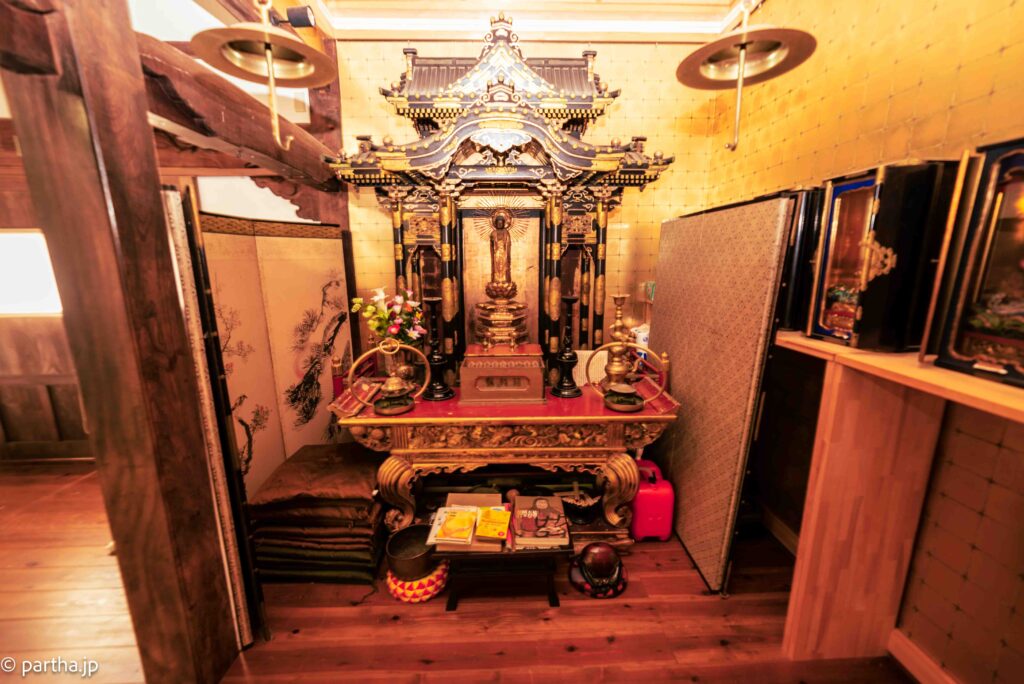
The main hall has an electric stove and a few pots and plates to cook and eat food. There is a toilet and a bathroom at the far end next to the altar.
To the right of the main room was a Tatami matted room that was to be our sleeping area. There were Futons stacked in the closet. We realised there were paintings stuck to the roof of this room the following day morning, the failing to recognise them in the night.
The description of the property mentions that these are paintings done by local children who created these works by soaking their feet with ink and stepping on white paper.
The excursion to the rice terraces was exhausting and the day was warm, so we settled in till the Sun set and then ventured out to find a restaurant close-by. There is an Italian restaurant called ‘Maruta’ around 10 minutes walk from our accommodation and we started out on foot. The area is made up of rice paddies, houses in between and vegetation all around.
As we stepped on to an almost deserted path we came across a snake in the middle of the path. I have lived in Japan for 20 years but have never seen a snake. It is not that they don’t exist, there are a few species including a few which are venomous.
The snake slithered away sensing the unwelcome intrusion but I had to pause at the surprise. I grew up in India and lived in a township away from the city located in the an area with fields and overgrowths so snakes were not uncommon. There were times when these creatures would enter houses but would be mostly driven away.
But I have spent most of my life in urban Japan and have never encountered snakes. Some of the treks and hikes did have warnings of snakes but in all my years here this was the first time I saw an actual snake in the wild.
Maruta was surprise, I expected a small restaurant, we were in a small town after all. But it was spacious, there was a large parking, a general seating and two private rooms for parties.
The couple that ran the restaurant were pleasant, there was a chef in the kitchen and these three people ran the restaurant. The menu mentioned that the owner cultivated mushrooms in the area and some of the dishes were from the locally grown mushrooms.
The restaurant was not crowded and we found seating easily. The food preparation takes a bit of time but it was a quiet relaxed atmosphere, the couple who ran the restaurant polite, patiently answering our questions and the food was excellent. I would also recommend the desserts, though limited in variety are still excellent.
We walked back to our accommodation switching on the torch on our cellphones, stepping on a snake was something everyone wanted to avoid.
The next day we headed to Sakata Park 佐潟公園, a 90 minute drive from our accommodation. There are a few mountains around Minamiuonuma for hiking but we preferred a more leisurely activity, walk around the Sakata lake. The park falls under Niigata city and is located in the Nishi Ward.
It was a warm day, when we arrived at the park we realised that even a walk around the lake under the warm Sun would be tiring. There were a few walking routes marked out on the maps that were displayed in the park but we found some of the routes closed.
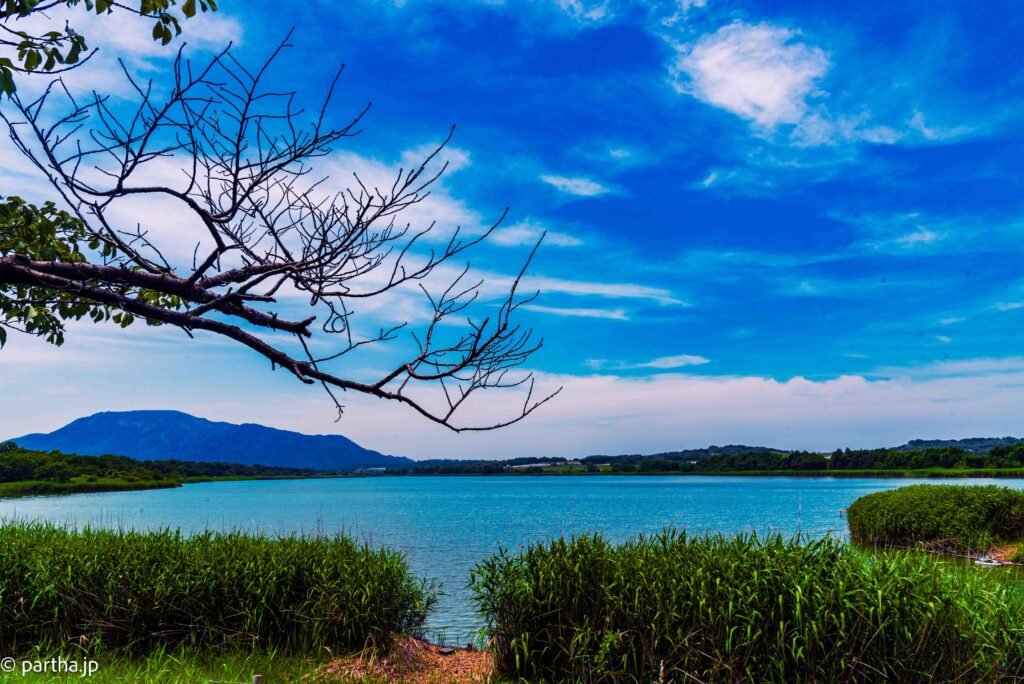
The park has three walking routes, Sakara zenshu course 佐潟全周コース taking around 90 minutes, Sakata Shimogata 佐潟下潟コース course 60 minutes and the old Hokkoku Kaido Course 旧・北國街道コース 30 minutes.
We chose the Sakata Zenshu course, but struggled to stick to the trail, there were parts of the course that we closed. There was an observation deck on the lake that was sealed shut with signs in Chinese, Vietnamese and of course Japanese asking people not to enter the hut. There is a nursery where you can buy Lavender plants. We walked for another 30 minutes along the path, it diverged from the lake at one point and went further and further away.
There were parts of the path that offered shade but a lot of it was exposed under the ever warmer Sun. We reached a bench around the middle of the park and decided to turn back. What would have been a pleasant walk under milder temperatures was turning out to be exhausting.
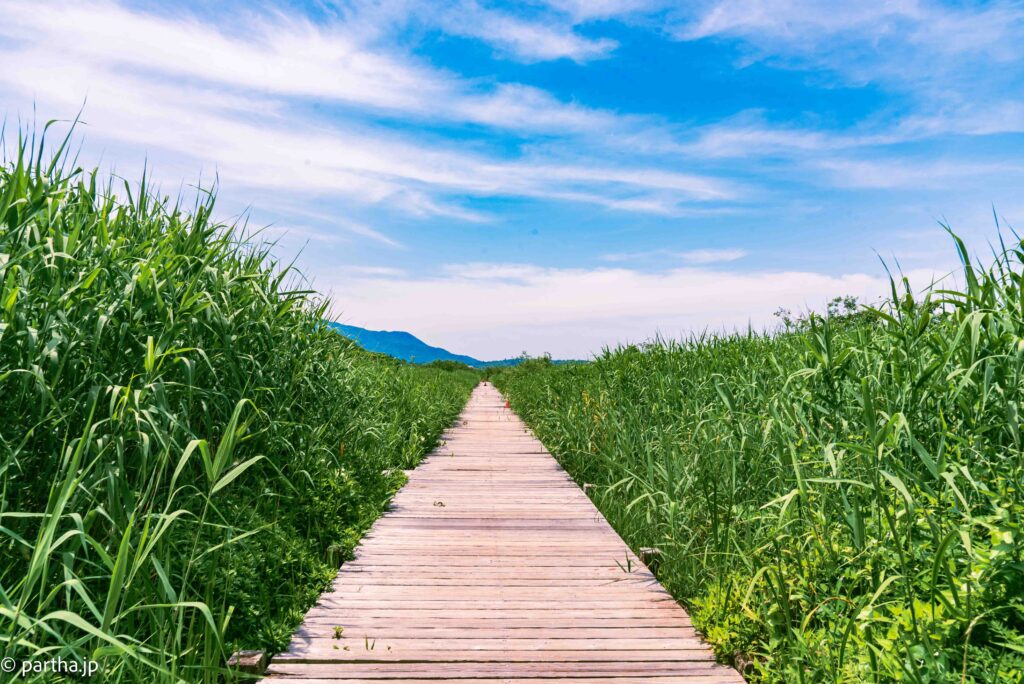
We headed back to the car park, the park was still relatively deserted there were fewer than ten people around the park, we could see some construction activity happening and small trucks passed by heading towards the interior of the park.
We passed by an Indian restaurant on our way from Minami Uonuma city to the park, it was curiously named Nisan. it probably had nothing to do with the Japanese automobile maker Nissan, and was derived from the Hindi word Nishan(Symbol). We decided to head to the restaurant for lunch and a search on Google Maps brought up more than one choice. We found the one that we passed on the way to the park. This was a Nepali run restaurant with the standard Nan Curry fare and like most restaurants in the region had a parking.
After lunch we headed to to the Kakudahma beach, the attraction, other than the beach, being a lighthouse on the cliffs and Mt Kakuda located a short hike from the lighthouse.
The beach was crowded on the warm early summer afternoon but the parking was spacious. We walked along the rocky shore, stepping nimbly over rocks and found the stone staircase leading to the lighthouse. The path was steep and we had to stop a few times to catch our breath, the mid-afternoon Sun was out and the day was hot.
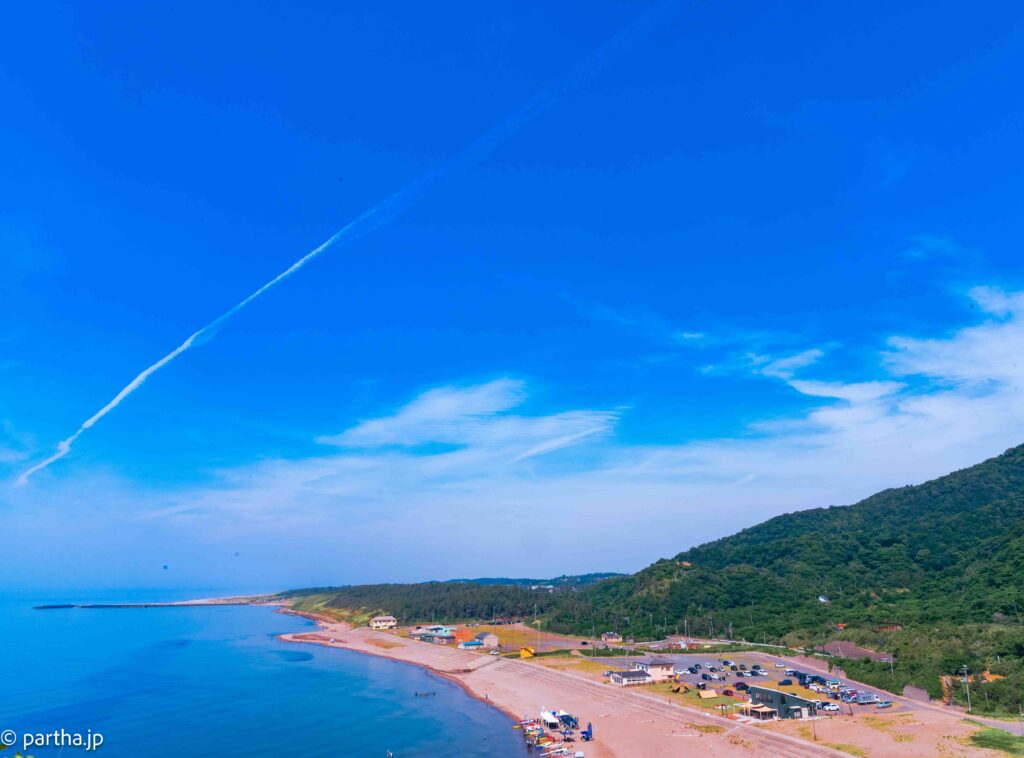
The staircase was narrow allowing only one person to pass each way and we had to stop and step aside if someone descended the path. There isn’t anything extraordinary about the lighthouse, it would make a picturesque spot at dawn and dusk, it was neither at mid-day.
The day was hot and shimmering and holiday makers crowded the beach, swimming and canoeing. There were organised groups teaching children canoeing and we could watch it all from the vantage point on the lighthouse.
On our way down, a group of middle aged ladies stepped aside to let us pass and stuck up a conversation. They seemed particularly interested in our travels, where we were from, where we were staying and headed.
We spoke for a few minutes and I was surprised at their interest, they showered praises on our Japanese ability and our exploration spirit. The conversation was getting a bit too long and was not progressing beyond the platitudes. The Sun was shining brighter and stronger, making us sweat so we gave an excuse to leave and head down to the beach.
‘Wait a minute’, one of the ladies said, I will give you a card’.
I was surprised, wondering what they were trying to sell on a precarious rock metres above the beach.
‘It has information in English, but not in your language’, she said handing over a card.
They were Jehovah’s Witnesses!
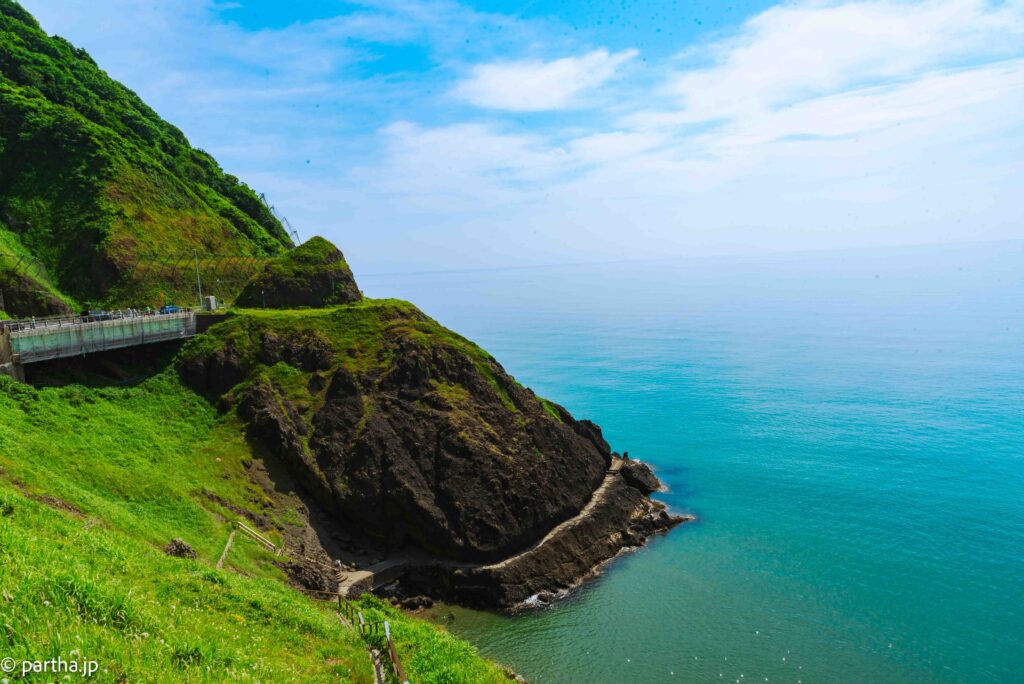
The drive back to our accommodation at Minamiuonuma was uneventful, the day had been tiring and we rested a bit before heading to ‘Maruta’ the Italian restaurant. There were no snakes crossing our paths today though I kept a wary eye to look out for them.
The restaurant was crowded this evening, there was a large raucous group, they looked like cyclists as was apparent from their gear. They laughed loudly, ordered food and drinks loudly, the decibel levels for each activity were higher than normal.
The owner couple helped us find a table and we settled down for another excellent meal, ordering dishes with the locally grown mushrooms. The large group nearby kept up with their orders so the service was slow , the couple overwhelmed with the orders. There was at least one party going on in one of the private rooms too.
We ordered the mains and then the deserts and the clock edged towards closing time, but the owner couple seemed unbothered.
When we finally finished and headed out one of the members from the raucous group was outside having a smoke. Though visibly drunk, he politely stepped aside when we exited. He then looked at us and smiled and said ‘Good Night’.

